Special thanks to Tom Feiza at How to Operate Your Home for providing several of the illustrations below.
We find a lot of problems with gas appliances vented into masonry chimneys. While modern gas appliances have their own plastic or metal vents to get exhaust gas out of the home, older gas appliances often used a masonry chimney for this. This used to work kind of okay, but as appliances get more efficient, this practice becomes more and more problematic.
Old appliances weren’t a problem
With older, inefficient gas appliances, it usually wasn’t a problem to use a masonry chimney to take the exhaust gases up and out of the house. Warm air is lighter than cold air, so it rises, and that’s how a chimney works. If you take an old appliance like a 100K BTU gravity furnace, it might convert 60% of it’s available heat into heat for the house. That means the other 40% of the heat is wasted, rising up and out of the chimney. The image below from How to Operate Your Home shows how this works. You have a fireplace on the right side of the chimney and a gas appliance on the left.
It’s not energy efficient, but it does mean you have a very happy chimney. When that furnace fires up, the chimney is getting 40K BTUs of heat! It’s stays warm and toasty, it drafts properly because that air is so hot and light, and we don’t need to worry about condensation issues because it’s so warm.
Chimney location matters
The location of a chimney will also affect its performance. When you have a chimney located in the middle of the house, the entire chimney is warm; only the top of the chimney is exposed to the elements. If a chimney has one of it’s four faces as part of an exterior wall, it’ll get a lot colder. And if a chimney has three outside walls, it’ll be especially cold. The most problematic chimneys are those with three outside walls.
The problem with new appliances
New appliances are more efficient, meaning they waste less heat. You can replace a 60% efficient, 100K BTU furnace with an 80%, 80K BTU furnace, and you’ll still have more available heat for the house; you’re jumping up from 60K BTUs to 64K BTUs for the house. But what happens to our chimney? Before, we were wasting 40K BTUs of heat to the chimney, but now we’re only wasting 16K BTUs of heat. That chimney just got a lot colder!
So what happens when we fire up the furnace? It might still work okay. If the clay tile liner is small enough and the chimney is located in the middle of the house, we might not have any problems. But let’s say the clay tile liner was already pushing the limit for size, and the chimney is located on an outside wall with three sides exposed to the outdoors. That 16K BTUs of heat might not generate enough heat for the appliance to draft properly. In other words, the buoyancy of the exhaust gases might not be enough to overcome the weight of the cold air in the flue. So instead of the exhaust gases rising up and out of the house, they might just spill into the house instead, creating an unsafe condition.
Even if there is enough heat to draft properly, you’ll likely end up with a lot of condensation inside of the chimney. When this happens, the acidic condensate eats away at the mortar joints in the chimney, which destroys the chimney from the inside out.
Water Heaters are even worse
To paint an especially problematic picture, picture this common scenario. The furnace and water heater share the same vent, and the water heater relies on the furnace to keep the chimney warm enough to draft properly. Life is good.
But now picture this: the furnace gets replaced with a high-efficiency furnace with a PVC pipe for exhaust, and no longer needs a chimney. Now that the water heater vent has been orphaned (yes, that’s the technical term for it), the tiny little water heater doesn’t stand a chance of drafting properly. The illustration below, courtesy of the Minnesota Department of Commerce, shows what this looks like.
And here’s a photo depicting the same thing.
While the water heater pictured above has a metal vent instead of a masonry chimney, the principle is the same. A diligent HVAC contractor would never create this scenario… but there are plenty of HVAC contractors who aren’t so diligent, and I’ve seen this done plenty of times. This can lead to a lot of problems.
The Fix
The fix for this condition is to have a small metal liner installed inside of the existing chimney.
It’ll be much easier for the gas appliance to warm up this smaller space, it’ll draft much better, and condensation will be kept to a minimum. The illustration above shows a flexible liner, but it can also be made from rigid metal. And this doesn’t just apply to masonry chimneys; this can also work for larger metal vents with orphaned water heaters, like the one shown below.
The chimneys shown below have metal liners installed for their gas appliances, and they have some extra sheet metal installed at the top of the flues to help prevent water from leaking into the chimney.
But just because you see a metal liner sticking up out of the chimney, it doesn’t mean the work was done properly. We’ve seen tons of installations where the furnace was vented into a metal liner, but the water heater wasn’t!
And we’ve also found vent liners that were disconnected inside of the chimney flue.
And even if a metal liner is installed, was it done before major damage happened at the chimney?
And does it extend all the way to the top of the chimney?
I don’t need to tell you what’s wrong with this one.
And that brings us to HVAC contractors.
Many HVAC contractors ignore chimneys
Now, here’s the really surprising news. A large number of HVAC contractors ignore just about everything I’m blogging about today. When they replace a gas appliance, they address the vent connector. That’s the thing that connects the appliance to the vent or the chimney… but they don’t deal with anything inside of the chimney! You heard me right. They don’t get on the roof to look down the chimney and don’t even verify if a chimney liner is present.
Their work typically ends at the chimney. They punt to chimney contractors for anything having to do with the masonry chimney. Again, this applies to a large number of HVAC contractors, but not all of them. Diligent HVAC contractors care about this stuff and inspect it.
Summary
Warm chimneys are happy chimneys. Cold chimneys are sad and dangerous. If a gas appliance is vented into a masonry chimney without a metal liner, it’ll usually cause major damage to the chimney, leading to expensive repairs. Even if you see a metal liner sticking out of a chimney, this doesn’t mean all of the appliances are vented into the liner. And even if gas appliances have been recently replaced, this doesn’t mean anyone has even looked at the condition of the chimney or verified the presence of a liner. That type of work is typically done by chimney contractors, not HVAC contractors.
And when you have a home inspection done by a thorough home inspector, they understand and inspect the heck out of all this stuff.

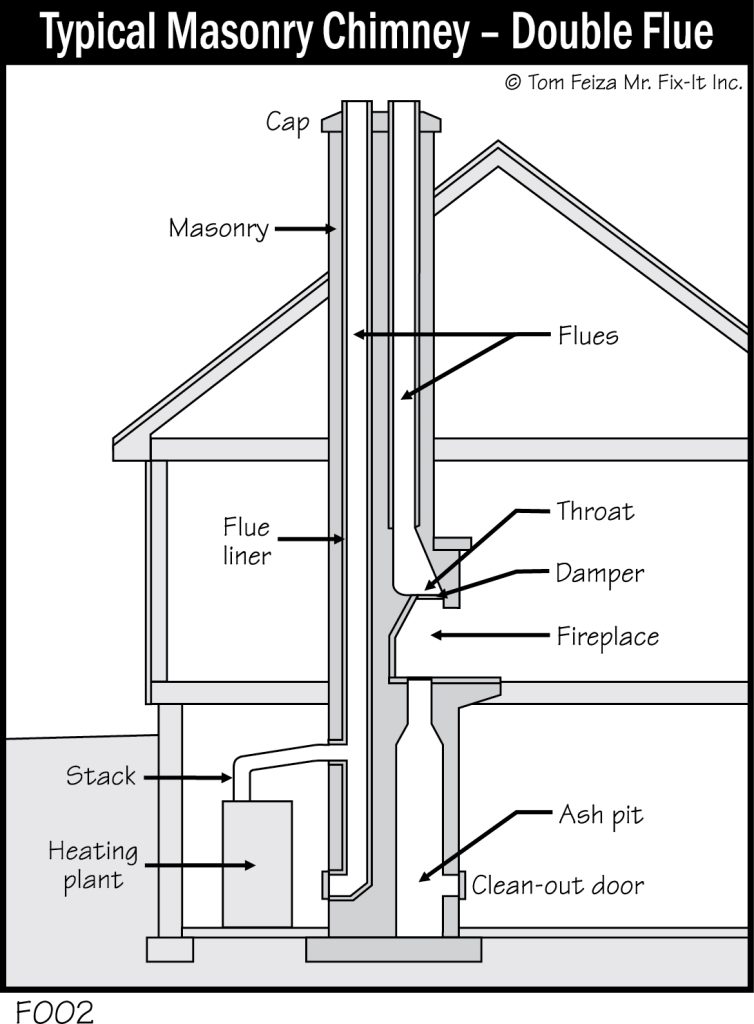
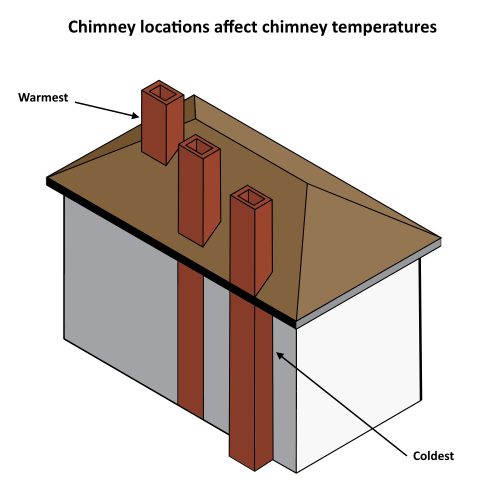
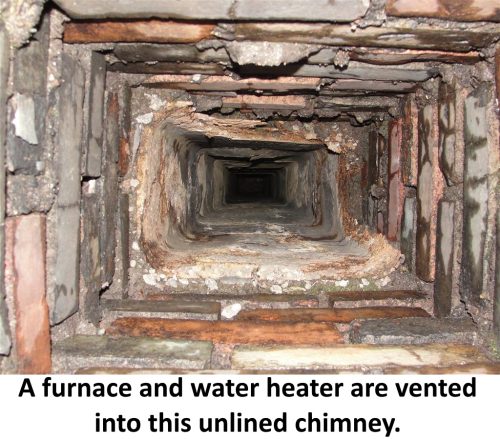
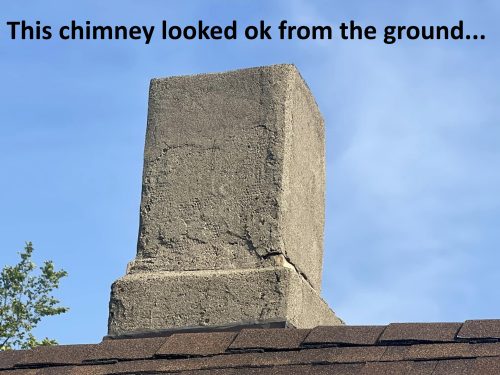
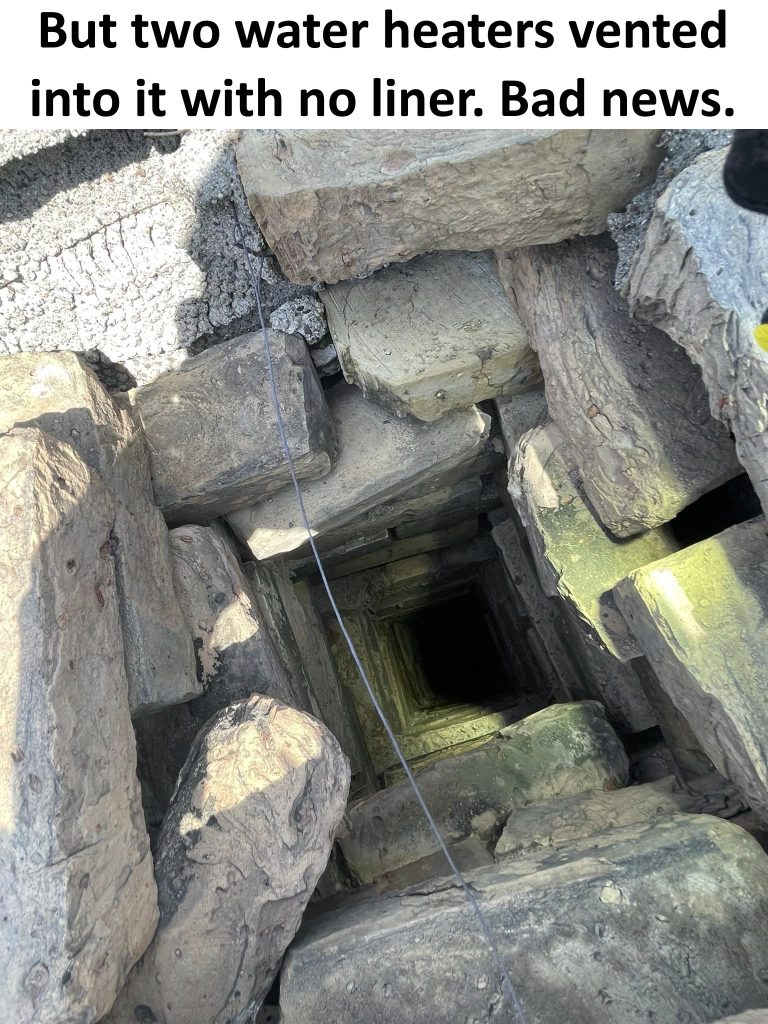
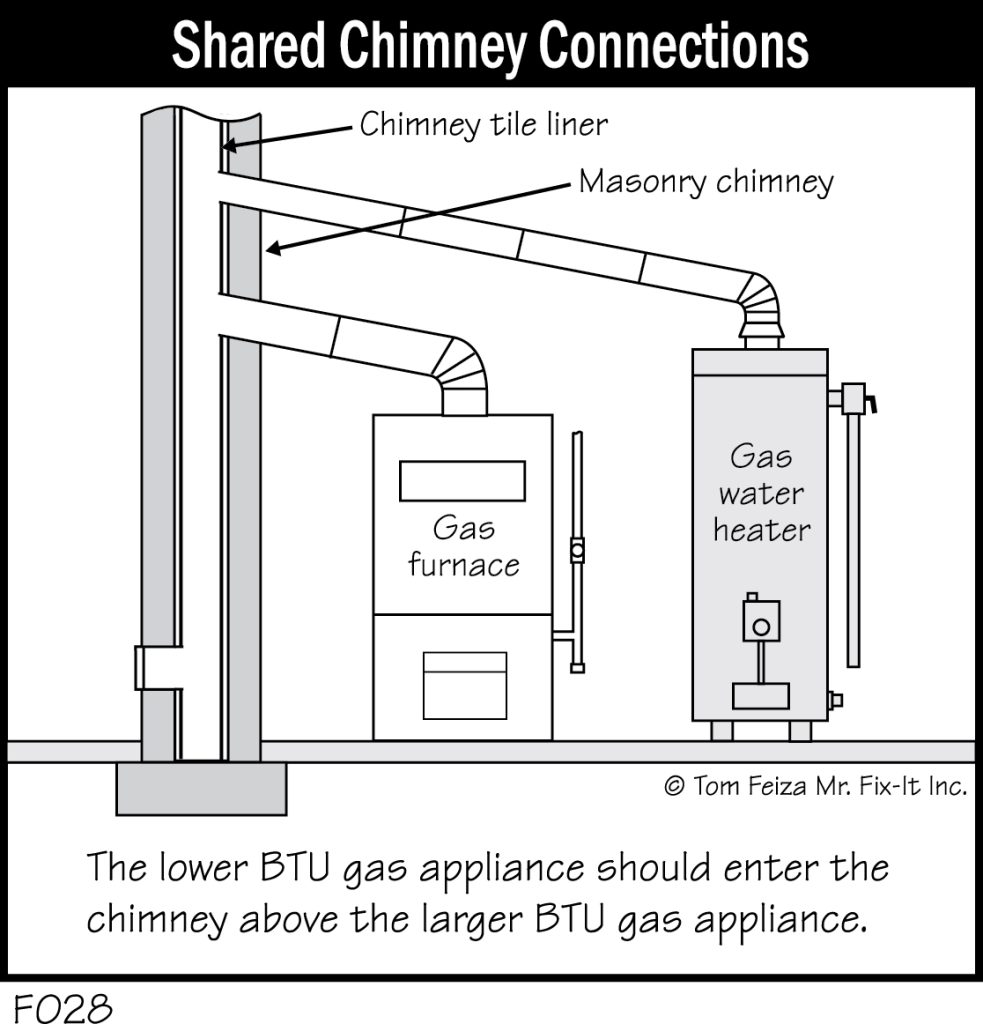
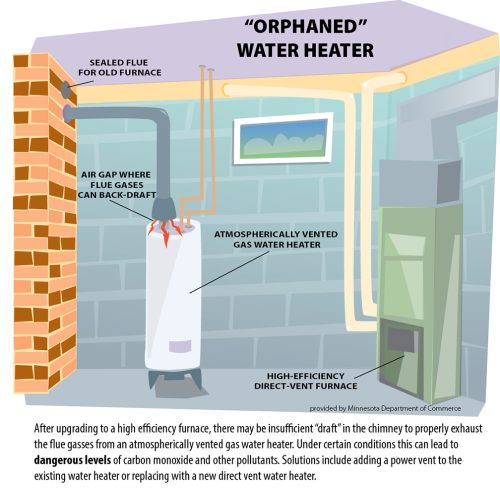
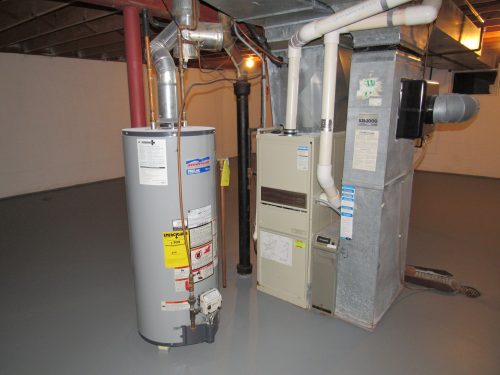
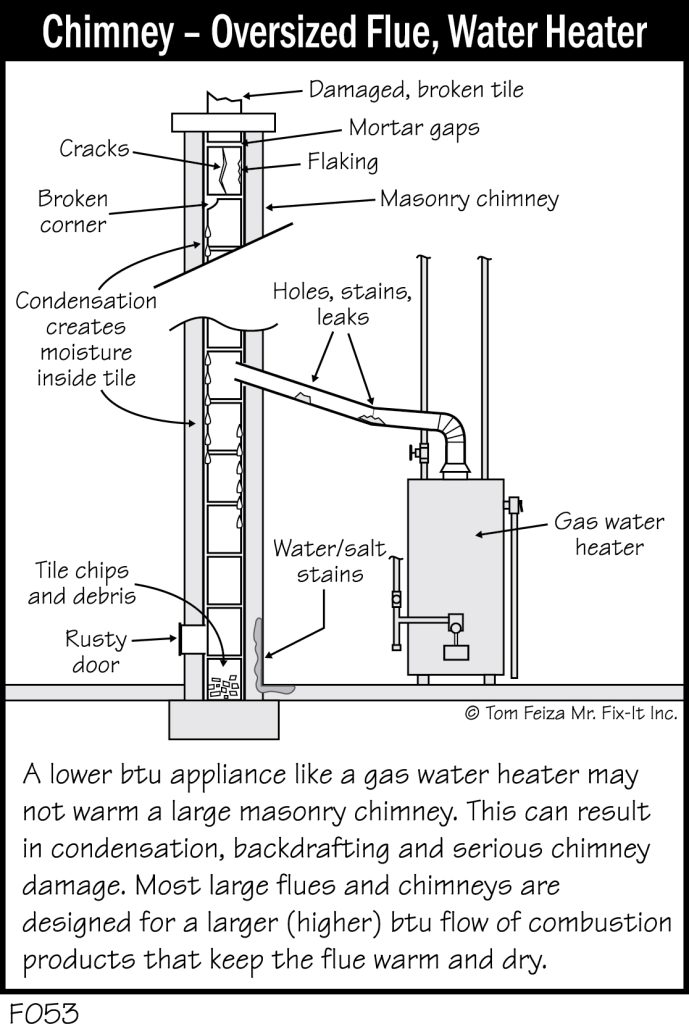
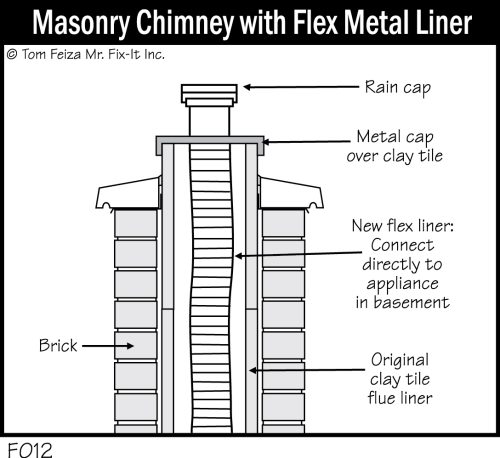
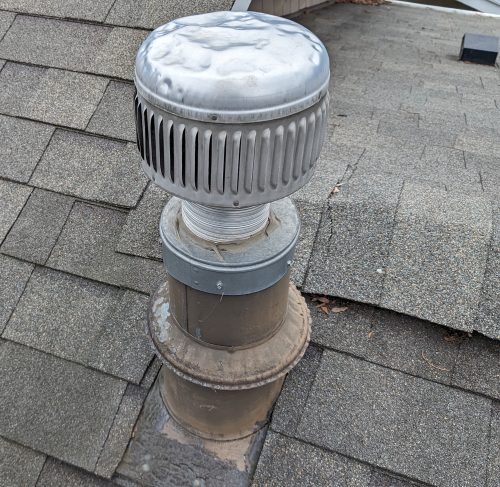
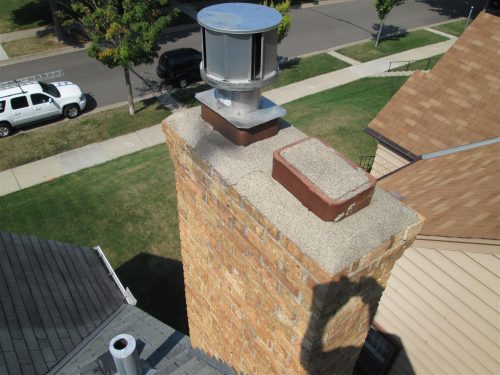
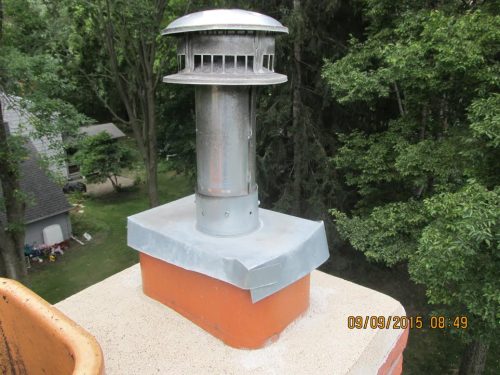
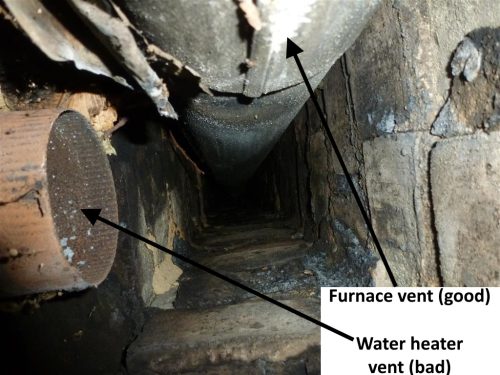
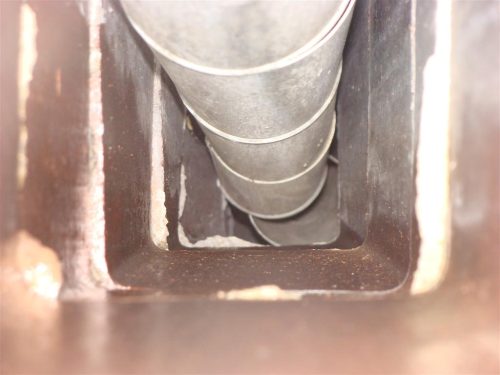
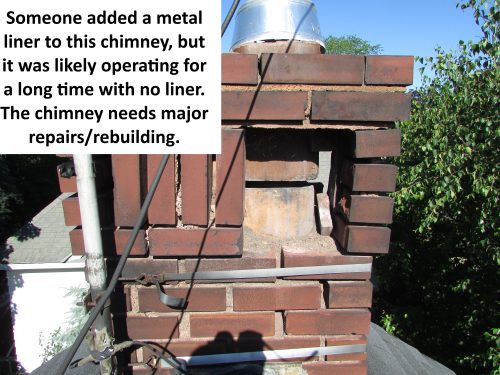
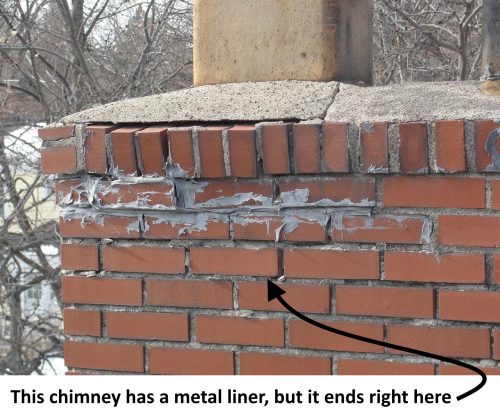
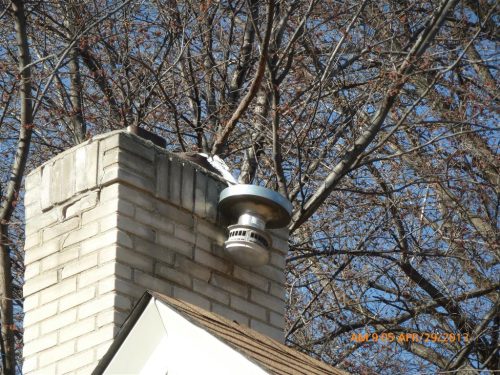
Alex
February 13, 2024, 2:31 pm
Great video. When I bought my house, I had no idea how lucky/spoiled I was to have a high efficiency furnace, power vent water heater, and direct vent gas insert fireplace (oh and a 1′ dryer vent run)… With proper maintenance, I have the highest confidence that all combustion gases are leaving the house.
Ken
February 17, 2024, 5:35 pm
I completely agree with everything you talked about. I replaced an 80* furnace with a 95* vented outside with PVC pipe. The hot water tank was left going out a 5″ liner into a three-sided outside chimney. I had a backdraft that melted the in-inlet and out-let insulators on the hot water tank. I installed a power vent hot water tank the chimney isn’t used at all now. I didn’t use the same HVAC contractor for the hot water tank.